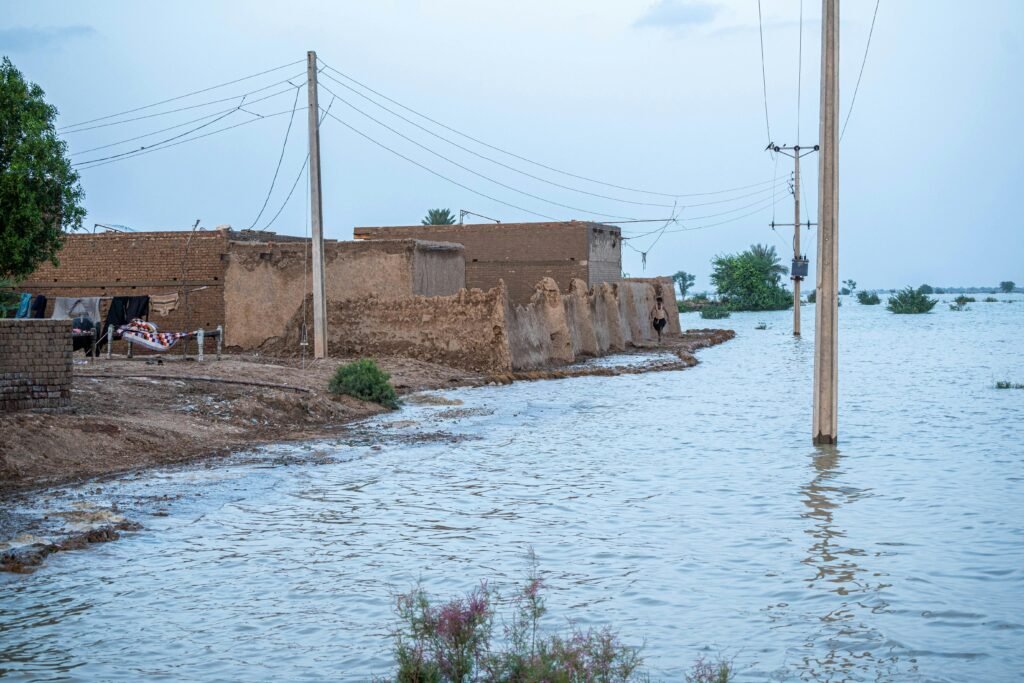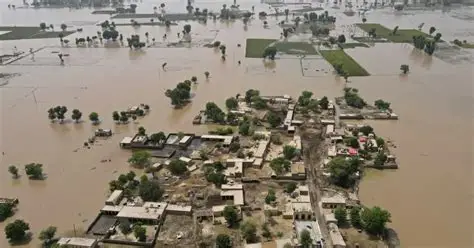
Pakistan Braces for Renewed Monsoon Onslaught: Heavy Rains, Flash Floods, and Urban Inundation Expected Nationwide
Published August 29, 2025
As Pakistan continues to recover from devastating floods that have claimed over 739 lives since late June, the Pakistan Meteorological Department (PMD) has issued a fresh alert for another intense spell of monsoon rains starting today, August 29, and persisting through September 2. This comes amid ongoing humanitarian crises, with recent heavy downpours exacerbating conditions in already flood-ravaged provinces like Punjab, Khyber Pakhtunkhwa (KP), and Sindh.
The PMD attributes the impending weather to strong monsoon currents originating from the Arabian Sea and the Bay of Bengal, combined with an approaching westerly wave from August 30. These systems are expected to bring widespread “heavy to very heavy” rainfall with thunderstorms across the country, interspersed with occasional gaps.
Understanding the Monsoon Dynamics
The South Asian monsoon is driven by seasonal wind shifts, where moisture-laden winds from the southwest dominate during summer months. The Arabian Sea branch, originating from the western Indian Ocean, strikes the western coast of the subcontinent first, often causing orographic rainfall as it encounters mountain ranges like the Western Ghats in India before influencing Pakistan’s western regions. Meanwhile, the Bay of Bengal branch flows eastward, picking up additional moisture and delivering heavy precipitation to northeastern areas before being deflected westward by the Himalayas.
A westerly wave, a mid-latitude disturbance, enhances this by interacting with the monsoon trough, leading to intensified convection and rainfall. In Pakistan, this convergence can result in extreme events, as seen in recent years where natural variability, including sea surface temperature anomalies in the tropical Pacific and northern Arabian Sea, has amplified precipitation by over 70% in some summer months. Climate change further intensifies these patterns, with warmer oceans fueling stronger storms and erratic rainfall distributions.
Regional Forecasts and Warnings
- Azad Jammu and Kashmir (AJK): Widespread heavy to very heavy rain with thunderstorms in Neelum Valley, Muzaffarabad, Rawalakot, Poonch, Hattian, Bagh, Haveli, Sudhanoti, Kotli, Bhimber, and Mirpur from August 29 to September 2.
- Gilgit-Baltistan: Rain-wind/thundershowers with isolated heavy falls in Diamer, Astore, Ghizer, Skardu, Hunza, Gilgit, Ghanche, and Shigar from August 30 to September 1.
- Khyber Pakhtunkhwa: Heavy to very heavy falls expected in Dir, Chitral, Swat, Kohistan, Shangla, Battagram, Mansehra, Abbottabad, Haripur, Buner, Malakand, Bajaur, Mohmand, Kohat, Peshawar, Charsadda, Nowshera, Mardan, Swabi, Khyber, Orakzai, Kurram, Hangu, Karak, Bannu, Lakki Marwat, Waziristan, Tank, and Dera Ismail Khan from August 29 to September 1.
- Punjab: Already battered by exceptional floods, the province anticipates heavy to very heavy rain in Islamabad/Rawalpindi, Murree, Galliyat, Attock, Chakwal, Jhelum, Mandi Bahauddin, Gujrat, Gujranwala, Hafizabad, Wazirabad, Lahore, Kasur, Sheikhupura, Sialkot, Narowal, Mianwali, Khushab, Sargodha, Jhang, Toba Tek Singh, Nankana Sahib, Chiniot, Faisalabad, Sahiwal, D.G. Khan, Bhakkar, Layyah, Multan, Bahawalpur, Bahawalnagar, Rajanpur, and Rahimyar Khan from August 29 to September 2.
- Sindh: Scattered rain in Mithi, Tharparkar, Sukkur, Larkana, Jacobabad, Dadu, and Umerkot on August 30-31.
- Balochistan: Rain-wind/thundershowers with isolated heavy falls in Barkhan, Musakhel, Loralai, Sibi, Zhob, Kalat, and Khuzdar from August 30 to September 1.
The National Disaster Management Authority (NDMA) has warned of flash floods in hilly areas of Punjab, KP, and AJK, potential landslides in vulnerable regions like Murree, Galliyat, and Gilgit-Baltistan, and urban flooding in major cities including Islamabad, Rawalpindi, Lahore, Peshawar, Gujranwala, Sialkot, Faisalabad, Nowshera, and Mardan from August 29 night to September 1. Road closures due to mudslides are likely, and residents are urged to avoid low-lying areas.
Latest Developments and Cross-Border Tensions
As of August 28, floods have already killed over 400 people in KP alone since mid-August, with total nationwide deaths exceeding 645. In a tense geopolitical context, India has released water from dams on shared rivers like the Chenab, Ravi, and Sutlej, amplifying flood risks in Punjab despite suspending the Indus Waters Treaty in April 2025. Key dams involved include Baglihar, Salal, Thein, Madhopur Headworks, Bhakra, and Pong, with releases up to 75,000 cusecs reported. Pakistan has evacuated over 150,000 from border areas, and the army is aiding rescues, though infrastructure failures and poor drainage have worsened urban chaos in cities like Lahore.
The PMD notes this year’s monsoon started earlier and may extend longer, with “unusual” intensity linked to climate change. Over 1,300 tourists were rescued in affected districts like Buner, Bajaur, Swat, Shangla, Mansehra, and Battagram, now declared disaster-hit zones. Emergency funds are being disbursed, but public outrage grows over government preparedness amid recurring floods.
Broader Impacts and Preparedness
These rains are vital for agriculture but pose risks of crop losses, landslides, and further displacement. Climate experts warn that factors like El Niño/La Niña, Indian Ocean Dipole, and rising CO2 levels are degrading soil nutrients and intensifying extremes. Residents should monitor NDMA and PMD updates, stock essentials, and evacuate if advised.
This spell follows a pattern of escalating monsoons, reminiscent of the 2022 floods that submerged a third of Pakistan and killed 1,700. As the nation faces these challenges, international aid and sustainable infrastructure are crucial for resilience.


















